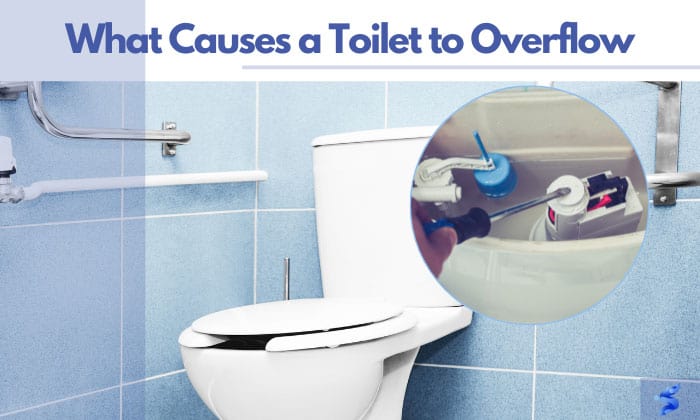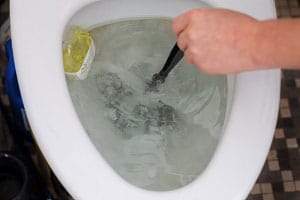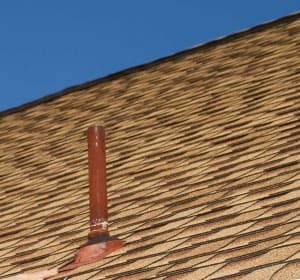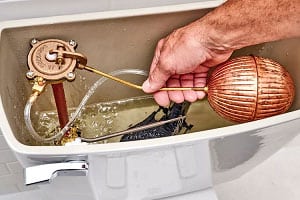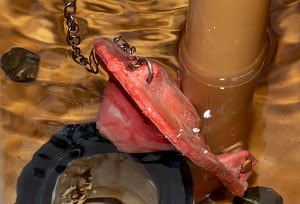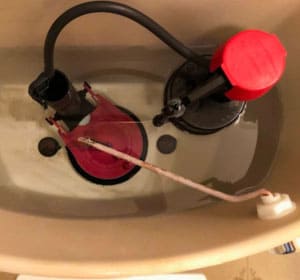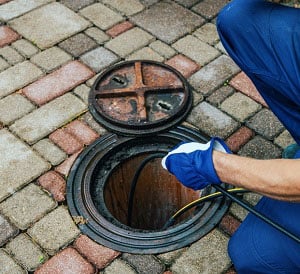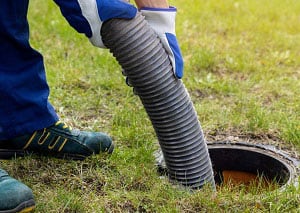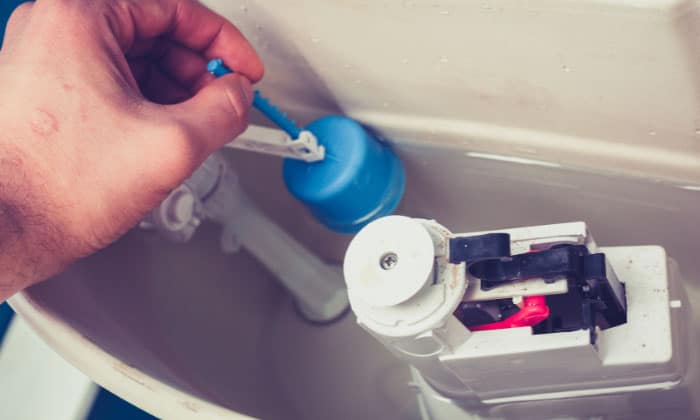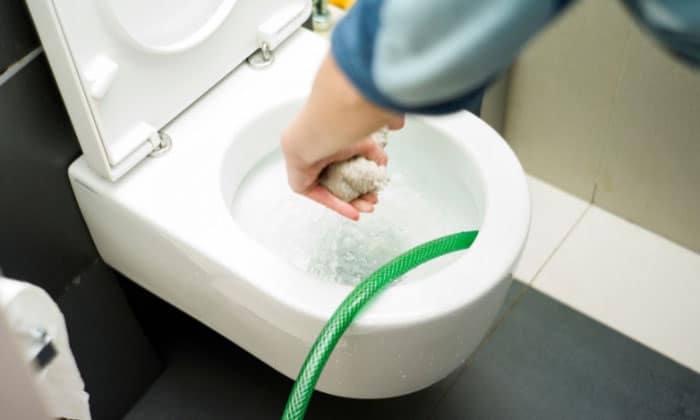Is the water in your bowl dangerously higher than the normal line? In that case, it might flow onto the floor—or it already has and now you’re looking for solutions.
Some reasons behind what causes a toilet to overflow are clogged drain, blockage in the vent pipe, high toilet float, broken toilet flapper, damaged fill valve, blockage in the sewer line, and a full septic tank.
We will explain each of them and give the respective solutions for them in this article.
Table of Contents
Why Does My Toilet Bowl Overflow?
We are only meant to flush waste that comes out of our bodies, both liquid and solid. But sometimes, toilets get clogged with poop too (especially a huge and hard one).
Although we can also flush toilet paper, anything beyond that—such as paper towels, napkins, objects like toys, and even “flushable” wipes—will cause a blockage in the drain. When the drain is blocked, the commode will overflow when flushed.
Aside from never throwing things that shouldn’t be in your bowl, these are your solutions to a toilet clogged and overflowing:
- Pour a bucket of water: If the toilet is clogged with poop, sometimes all it needs is a strong push; slowly but surely pouring a bucket of water can do the job.
- Pour hot water: Another quick solution is pouring hot water to break up the clog. Watch how the water flows slowly and then drains completely.
- Use a plunger: A flange plunger will create better suction which is vital for the unclogging process.
- Use a snake or auger: For pulling out the blockage, the snake is more applicable. Otherwise, use the auger for pushing the clog.
- Baking soda and white vinegar: This mixture results in water and carbon dioxide strong enough to break the blockage.
- Dishwashing liquid and hot water: The liquid dish soap will act as a lubricant and when mixed with hot water, it can remove the clog.
If your toilet is near overflow even without being clogged, a clogged vent pipe may be the reason. Air is necessary to move water from the toilet to the drainage pipes when we flush. The job of the plumbing vent or vent pipe is to regulate the air pressure.
A clog in this pipe interrupts the water flow and will cause the water to get back up the bowl. This will also affect your other drains, such as the sink and shower.
To solve this problem, the vent pipe has to be cleaned and cleared of clogs. This should be done by a licensed plumber as doing it by yourself may be dangerous, plus you might not have the correct tools.
Another reason for a toilet overflowing but not clogged is a wrongly positioned toilet float in the tank. The float determines the water level in the tank, so it shouldn’t be too low or high. This is a common cause of why the toilet keeps overflowing.
How do you fix this? Instead of turning off the water supply as a temporary solution, do the following:
1. Turn off the shut-off valve without flushing afterward. Check first if there’s an indicator for the water level inside the tank (a line in the tank’s wall).
If there isn’t, the water level is normally around 1 inch below the overflow tube’s top. If the water exceeds this measurement or the mark on the tank, then you need to lower the float.
2. At this stage, we’re now going to adjust the float. If you have an old diaphragm ballock without an adjustment screw, you just need to bend its handle downward to lower the water level.
If your toilet has a new type of float—whether cup or ball—simply turn the adjustment screw clockwise with a flathead screwdriver to lower it along with the water level.
3. Turn on the shut-off valve, then flush. See if the water in the tank refills just an inch below the overflow tube.
On the other hand, if you see that the toilet float is damaged, replace it to avoid malfunction leading to an overflow.
If your toilet randomly overflows, we can bet that the problem comes from the tank, specifically the flapper. Attached to the overflow tube, the toilet flapper is in charge of letting the water out of the tank and into the bowl. It also seals the opening when nobody’s flushing.
So if you have a bad flapper that doesn’t seal the opening tight, water will continuously flow into the bowl even when not in use. But don’t worry, here’s how to fix it:
- Purchase a flapper valve that fits your toilet. This will also come with the flapper chain that we attach to the lever.
- Turn off the shut-off valve and flush to drain the tank.
- Disconnect the chain from the lever and pull the old flapper off the pegs of the overflow tube.
- Connect the new flapper to the pegs of the overflow tube then position it to ensure the seal.
- Clip the chain of the new flapper to the lever at the right length.
Is the back of your toilet overflowing? It’s probably the fill valve. The latter is the component that refills water into the tank when the toilet is flushed. If it’s damaged, it may bring in too much water than necessary, or even when the commode is not in use.
What you need to do is replace the fill valve or else your toilet won’t stop overflowing too. To do this, follow the steps below:
- Turn off the shut-off valve and flush to drain the tank. You can manually take out the water that will be left by using a sponge or towel too.
- Put a bucket under the water supply hose then disconnect the hose from the toilet tank.
- Unscrew the nut locking the old fill valve under the tank, then take out the component.
- Insert the new fill valve kit in the tank. In brands like Fluidmaster, there is a mark called “critical level”(CL)” which should be an inch above the overflow tube.
- Insert the refill tube (cut if it’s too long) into the tiny slot on the overflow tube.
- Lock the fill valve with the nut under the tank, then reconnect the water supply hose. Afterward, turn on the shut-off valve.
Aside from flushing objects that are not flushable, the sewer line may be blocked by other elements such as tree roots. Grease and fat from the kitchen can also cause clogs.
Even though uncommon, if your toilet is overflowing for no reason even when you turn off the shut-off valve to cut the water supply, your sewer line may be blocked. The latter causes the sewage to go back to the toilet because it can’t drain.
In this case, call a licensed plumber immediately so the problem can be diagnosed. We also recommend turning off the water supply to avoid accidentally adding up to the overflow.
Every 3 to 5 years, septic tanks should be pumped so we wouldn’t experience sewage showing up in our toilet because the water has no other way to escape. What’s worse is that the water doesn’t go away even after a flush.
It’s best to call the help of a plumber in this situation to determine if the septic tank is really the problem, and he may recommend hiring the services of septic companies. But if you know that your septic pumping is already overdue, you will definitely need septic services.
Early Signs That Your Toilet Will Overflow
If you have a toilet almost overflowing, don’t wait until the water gets to the floor! Here are some signs to determine that an overflow could happen:
- Slow draining: When you flush the toilet and notice that it drains slower than usual, there might be a clog that can later cause an overflow.
- Water immediately rises: Caused by a clog as well, the bowl water immediately rises even when you just flushed it. The reason is that the water can’t move past the blockage so it goes back into the bowl.
- Running toilet: Aside from skyrocketing water bills, this may also cause a toilet overflow.
What to Do to Avoid Overflowing Toilets?
Following the causes of a toilet overflow and solutions that we provided, here are some guidelines to avoid this incident.
- Don’t flush anything on the toilet aside from waste and toilet paper. Flushable wipes are not supposed to be in the toilet drain as well.
- Check your toilet tank’s components if they are properly installed or damaged.
- Aside from not flushing items that are not flushable, be careful with all the drains in your house. When working in the kitchen, avoid throwing grease and fat in the drain to avoid clogging the main sewer line and septic tanks.
- If you have a septic tank system, make sure to have it pumped regularly; every 3 to 5 years is the recommended interval.
Frequently Asked Questions (FAQs)
Toilet Overflow: Can I Fix It Myself or Should I Call a Plumber?
The answer will depend on the cause of the toilet overflow. If the reason behind this situation is a clog in the drain, you can try DIY solutions to remove the blockage. If it’s in the toilet tank components, you can easily replace or adjust a part by yourself as well.
But if the cause of the overflow is a blocked vent pipe, clogged sewer line, or a full septic tank, calling a licensed plumber is the best solution.
How Much Does It Cost to Fix an Overflowing Toilet?
The cost will vary depending on the reason for the toilet overflow.
| Solution | Cost |
| Toilet tank components | below $25 each |
| DIY unclogging solutions (baking soda, white vinegar, and dishwashing liquid) | below $20 |
| Tools (plungers, snakes, and augers) | less or more than $30 |
| Clearing a clogged vent | between $270 and $1,000 |
| Unblocking the sewer line | as low as $100 and higher than $400 |
| Septic tank pumping | between $175 and $700 |
Conclusion
Toilet bowls need water to function, but having too much of it is scary, especially when it’s near overflow.
What causes a toilet to overflow will vary, but the most common is a clogged toilet drain due to flushing objects not allowed to be flushed. Sometimes, the reason can also be one of the tank components is wrongly installed or damaged, causing water to flow continuously into the bowl.
However, the root may also be more complicated and need a plumber’s attention. Examples are a blocked vent pipe, a clogged sewer line, and a full septic tank.

I’m Paulk Webb, and I work as a writer for Saveourwaterrebates. I’m happy to put in the time and effort to conduct market research to identify the most pressing issues faced by households concerning their plumbing. Feel free to check out our guides to get the most informed recommendations for how to solve your problems.


